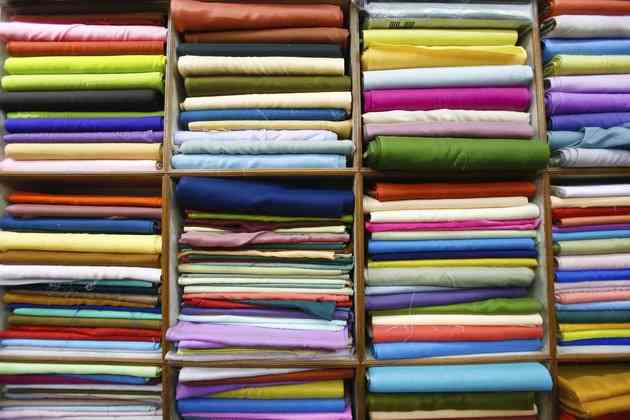The Health and Safety of Polyester Fabric

Polyester fabric has a variety of beneficial uses with limited health and safety concerns. Polyester is extensively used in clothing and is commonly blended with cotton, rayon or wool. Polyester's additional applications include waterproof roof matting, rope fabrication, hoses, carpeting and home furnishings such as sheets and curtains. Polyester fabric usually is a stable, sensible choice when accompanied by proper care and handling.
 Assorted fabrics in a store. (Image: paulprescott72/iStock/Getty Images)
Assorted fabrics in a store. (Image: paulprescott72/iStock/Getty Images)Properties
 Polyester can be washing in the washing machine. (Image: Jupiterimages/Photos.com/Getty Images)
Polyester can be washing in the washing machine. (Image: Jupiterimages/Photos.com/Getty Images)Polyester is machine washable, quick-drying and wrinkle-resistant. A synthetic, naturally bright fiber, polyester modifies easily to meet various strength and size needs. It is strong and durable with shape retention compared to other fibers that may flatten with extended use. Industrial clothing requires the long-lasting wear polyester gives. Some polyester fabrics are fire retardant, but as a rule, they dissolve at a certain temperature.
Benefits
 Pillows are made from polyester. (Image: Jupiterimages/Goodshoot/Getty Images)
Pillows are made from polyester. (Image: Jupiterimages/Goodshoot/Getty Images)Health and safety advantages include withstanding mildew, abrasions and the majority of chemicals. Insulation ability imparts protective qualities to harsh-weather gear. Warming trapped air within the fibers by the body retains heat. Additionally, polyester fabric provides cushioning and comfort to pillows, upholstery padding and comforters.
Safety
 Polyester blouse. (Image: Chiyacat/iStock/Getty Images)
Polyester blouse. (Image: Chiyacat/iStock/Getty Images)Polyester fabric will burn upon exposure to direct flame with a melting point of 500 degrees Fahrenheit. Clothing, bedding and all applicable material manufacturers are required to comply with OSHA Hazard Communication Standards. While fire is atypical, allergy-related issues occurring as a reaction to polyester fabric are a more frequent problem.
Health Effects
 Skin rash. (Image: -aniaostudio-/iStock/Getty Images)
Skin rash. (Image: -aniaostudio-/iStock/Getty Images)Possible adverse reactions to fabrics and textiles are always a possibility. Some people may experience skin rashes, including contact dermatitis or skin inflammation, due to contact with certain substances. Others may suffer respiratory issues or eye irritation with similar causes.




